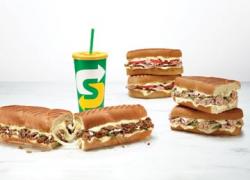Road Trip! Summer Means Hitting The Open Highway
Ah, the familiar refrain that has stood the test of time and one that sends most parents cringing while taking a family road trip.
As the summer of 2018 kicks off, consider this: 68 percent of Americans are likely to go on vacation, and 85 percent of them will travel by car, based on data from a recent online survey of approximately 1,500 adults.
While aspects of a road trip may be daunting, a majority of these travelers acknowledge that getting there is half the fun: 24 percent strongly agree, and 45 percent somewhat agree that getting to a vacation spot is often as enjoyable as being there.
If you've ever wondered what goes on inside the car during a road trip, read on.
A survey conducted by NACS, a trade association representing the convenience-store industry, reveals that most passengers want to be social: just over 60 percent report that they enjoy talking with fellow passengers and almost 80 percent cite listening together to music, podcasts, or audio books as favorite activities.
However, when it's time to take a break, disagreements can arise, especially when it comes to meals and snacks. A convenience-store stop can be a simple solution.
Today's convenience stores offer more than just gas and restrooms. Many serve a range of hot-meal options such as pizza and burgers, as well as customizable sandwiches, coffee, drinks, and smoothies, so passengers and drivers of every age and taste can find something to satisfy them.
The NACS survey results show that the top three reasons for breaks during summer road trips are to:
* Use the bathroom (96 percent).
* Get gas (95 percent).
* Buy food or drinks (91 percent).
"There's only one place that can satisfy all three of the top reasons for stopping during a road trip: a convenience store," says Jeff Lenard, NACS vice president of strategic industry initiatives.
"From restrooms and fuel pumps to indulgent snacks and healthy options, you can stop once and make everyone happy. And that can certainly make a road trip more fun."
However, regular breaks are an important part of road trips for safety as well as for practical reasons.
Drivers need a quick and easy place to stand up and stretch, or to allow someone else to take the wheel. Kids get antsy and need to stretch, too - according to the NACS survey, approximately 45 percent of the in-car disagreements during road trips center on children fidgeting or arguing.
Convenience stores provide all the services needed for long or short road-trip breaks in a safe, predictable environment.
Many convenience stores offer easy access from major roads, so there's no struggle or lost time navigating to an unknown spot without any sense of the services available. Convenience stores offer clean, well-lit rest stops for single drivers, groups of friends, older adults, and families with children.
Visit convenience.org/ more for additional information about what convenience stores offer and how they can help make summer road trips smooth, safe, and enjoyable.




